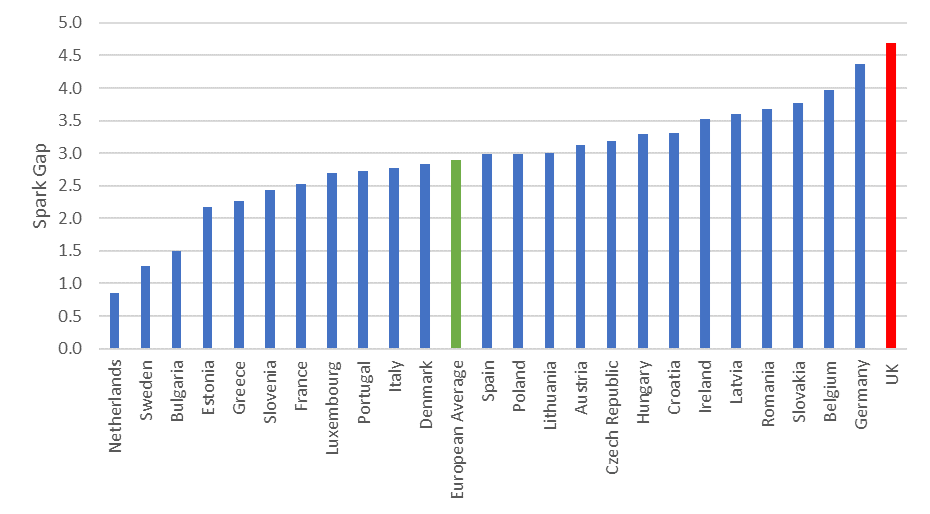why we need to close the UK’s Spark Gap
Speeding up the shift towards cleaner energy
The Spark Ratio, also known as the ‘Spark Gap’ or ‘Spark Spread’, is a term used to talk about the difference in prices between gas and electricity, measured per kilowatt-hour (kWh). It’s like comparing how much two different things cost, but in this case, it’s the types of energy we use in our homes.
In the UK, there’s a noticeable price ‘gap’ where electricity is often much more expensive than gas, creating a barrier in the adoption of carbon-reducing technology, such as heat pumps.
For example, before the recent Electricity Price Guarantee, under which levies were removed from bills, electricity could cost around 4.7 times more than gas. Although this gap has closed slightly, it’s still quite large. This makes it challenging for more carbon friendly, efficient electric options, like heat pumps, to be as cost-effective as they could be.
Air source heat pumps can heat your home using less energy because they’re about three times more efficient than traditional gas boilers. Ground-source heat pumps are even better, offering four times more efficiency. However, because electricity is more expensive, this efficiency doesn’t always lead to savings on your energy bill.
UK has the biggest Spark Gap in Europe

The high price of electricity in the UK is due to several factors. One of the main reasons is that the cost of producing electricity is often linked to the price of gas because a lot of our electricity comes from gas-powered plants. These plants use a lot of gas to produce electricity, which drives up the price.
Additionally, power plants must pay taxes on the pollution they produce, which adds to the cost of the electricity they generate – but doesn’t apply to gas used directly in homes. There are also extra charges on electricity for environmental and social initiatives that aren’t added to gas bills, making electricity even more expensive.
To make carbon emission reducing options like heat pumps more attractive and affordable, we urgently need to reduce this spark gap. The government is considering several measures to do this, such as removing the current charges from electricity bills and changing how electricity prices are set, so they’re less tied to gas prices. These steps could help make electricity cheaper, encouraging more people to switch to heat pumps and other electric options, leading to a cleaner environment and lower energy bills for everyone.
Closing the spark gap would significantly speed up the UK’s shift towards cleaner energy, enabling us to meet our net-zero target, and safeguarding our planet for future generations.
For more detailed background info see posts by:
Richard Warrne, Kensa Group, The Price Cap and the Spark Gap.
Lauren Orso and Madeleine Gabriel, Nesta: The electricity-to-gas price ratio explained – how a ‘green ratio’ would make bills cheaper and greener
